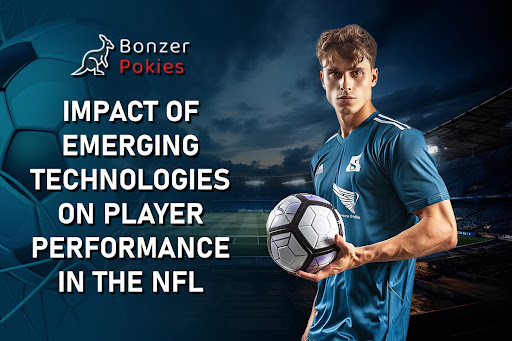
NFL teams are using emerging technologies to improve physical performance and game strategy. Data analytics systems, virtual reality and biometric devices help assess fitness levels and tailor training to individual players. This is similar to how users free pokies on bonzerpokies.com use strategies to improve betting performance.
We will analyse how virtual reality (VR), sports analytics and biometric technologies are influencing the approach to training and exercise management. And whether it really affects the competitiveness of football teams.
Data Analytics and Personalised Training Technologies
Advanced sensors, advanced analytics and AI assistants are helping coaching staffs track athletes’ physical performance and develop effective training plans. Thanks to the latest technologies, players achieve their best form in the shortest possible time and with minimal risk of injury.
Using Sensors And Trackers
Sensors and trackers are useful tools in the arsenal of NFL teams. Small devices attach to the body or equipment, collecting data on important metrics:
- Speed;
- Heart rate;
- Fatigue level;
- Movement intensity.
For example, GPS trackers monitor the distance a footballer covers on the field, his maximum speed and the number of sprints. The data is used to adjust loads in real time, preventing overload and injury.
Sports Analytics And Big Data
Sports analytics combined with big data provides a better understanding of how players behave on the pitch and what can affect training performance. Data analytics systems process the information collected from trackers and create detailed reports on each athlete’s performance. Coaches analyse the statistics to identify players’ strengths and weaknesses and develop individual training plans. For example, if analytics show that a player tires faster during intense attacks, more endurance exercises are added to the training.
In addition, coaches use data to simulate game situations. This is necessary to optimise the team’s performance depending on the opponent’s style of play. This approach to training provides an advantage on the field, helping athletes better prepare for specific matches and anticipate their opponents’ moves.
Artificial Intelligence and Machine Learning
Artificial intelligence (AI) and machine learning (ML) have expanded the possibilities of sports analytics. The technologies analyse vast amounts of data and make predictions to predict match results, player performance and injury probability. For example, AI monitors changes in a player’s behaviour to determine when they start to fatigue or when the risk of muscle damage increases.
Virtual Reality (VR) And Training
VR technology can simulate game situations, train reactions and analyse the actions of opponents without putting athletes under physical strain. Football players literally ‘live’ the game, watching the action on the field from different angles. For example, quarterbacks use VR to analyse the opponent’s defence and make decisions under pressure. This helps them adapt more quickly to different scenarios.
Digital training is designed to replay critical moments to better analyse the situation and practice optimal actions. Coaches simulate and replay moments of the game to analyse the opponents’ tactics and understand how best to counterattack.
Simulations for Coaches and Players
VR simulations are an important element of training not only for players but also for coaches. With the help of simulations they analyse tactical schemes, observe the formation of players and check how different strategies work against the opponent.
Line players practise blocking in a virtual environment, studying the movement of defenders. This way, they can see their mistakes better and make adjustments faster.
Smart Equipment and Injury Prevention
Modern equipment technology prevents injuries in the NFL. Smart helmets, high-tech materials and wearable gadgets are being created to improve player safety.
Smart Helmets with Impact Sensors
Helmets with inbuilt sensors detect the force and direction of impacts, warning of concussion. The data is instantly transmitted to medical personnel, allowing for a quick assessment of the player’s condition.
Innovations in Protective Equipment
Composites and gel inserts absorb impact energy, reducing stress on the body. Integrated sensors in bibs and kneepads monitor pressure and strain, making it easier for coaches to make changes to training plans.
Wearable Motion Analysis Devices
Wristbands and smart belts analyse players’ movements, identifying potential risks to muscles and joints. This allows for adjustments to drills and manoeuvres on the pitch, reducing the likelihood of injury.
Conclusion
New technologies are a real support for NFL players, influencing their performance and training principles. They reduce injuries, improve training and keep athletes healthy.
div>Continue the CFL Football discussions on our offical CFL Discord Channel

Big Announcement: CFL Unveils Free Live Streaming Platforms
Get Alerts & Stay Connected
CFL iPhone AppCFL Android App












